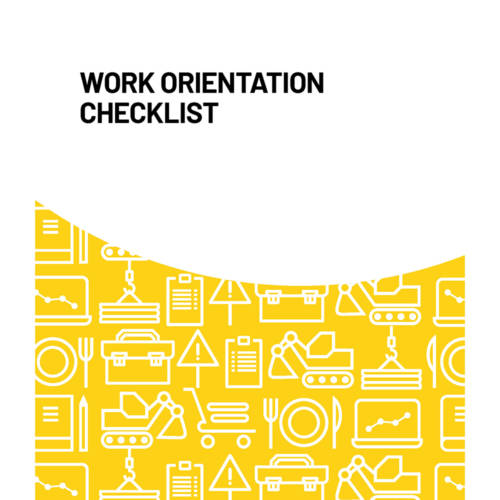Orientation and work guidance
Orientation and work guidance are proactive safety activities. Shortcomings in work guidance are common causes of occupational accidents. Well-implemented orientation also prevents harmful workloads and helps employees adapt to the work community.
The Occupational Safety and Health Act obligates the employer to familiarise employees with their work and working conditions, as well as the correct use of tools and safe working methods. It is particularly important to orientate young employees who are in the early stages of their career.
What is orientation and work guidance?
- Orientation gives the employee the skills to work in the work community and in their duties in a correct and safe manner.
- Work guidance ensures that the employee is familiar with the work task and the machines and tools used, and also knows how to act in fault and exceptional situations.
The person receiving guidance should be encouraged to take initiative and be independent. A person who is familiar with and committed to their work wants to take responsibility for their competence by asking, revising and finding out if they are unsure about something.
Who are provided with orientation
Systematic orientation and work guidance cover all personnel groups, including part-time employees, agency contract workers, summer employees and other seasonal workers.
Orientation and guidance must cover the work performed in customer premises and the employees of an external employer working at the workplace.
Employees posted abroad need to be familiarised with the culture, legislation, mobility and working conditions in the destination country.
Work guidance is needed when
- the task is new to the employee performing it
- the tasks change
- the working methods change
- new machinery, equipment and substances are procured and taken into use
- the task is carried out infrequently
- safety instructions are neglected
- an accident occurs or a case of an occupational disease is detected at the workplace
- shortcomings are detected in the work guidance provided
- the situation differs from the usual
- errors in operations and shortcomings in the quality of products and services are detected.
Work guidance plan
To support orientation and work guidance, it is a good idea to have a written plan to monitor the progress of the guidance.
The guidance plan is prepared on the basis of information obtained from the identification of hazards at work. Guidance must be given on residual hazards and attention must be paid to hazard identification and procedures to prevent dangerous situations.
Written instructions must be prepared for various disturbances and for cleaning and maintenance work, which can be used when providing guidance. It is advisable to use illustrative photographs in the instructions for exceptional situations.
Work guidance also includes familiarising the employee with the operating models of the workplace. These include instructions related to harassment and inappropriate treatment, threat of violence and harmful workload.
Utilising the expertise of the workplace’s occupational safety and health personnel in orientation is important in order to integrate occupational safety and health matters seamlessly into work guidance.
Companies have their own licence practices for work requiring special safety procedures or special competence. A licence is based on the instructions created on the basis of a work risk assessment.
Licence practices apply to the workplace’s own employees as well as any external workers. Specific qualifications are required to do certain work and work tasks.
Examples of tasks requiring a licence:
- container work
- operating a forklift
- operating a personnel hoist
- transporting a tower crane (less than 25 tm load moment)
- securing a load to a crane intended for installation
The most common tasks requiring qualifications:
- hot work
- lifting
- electrical installation and maintenance
- transportation of special purpose vehicles
- controlled explosion
- welding
- roof and water insulation
- asbestos work.
